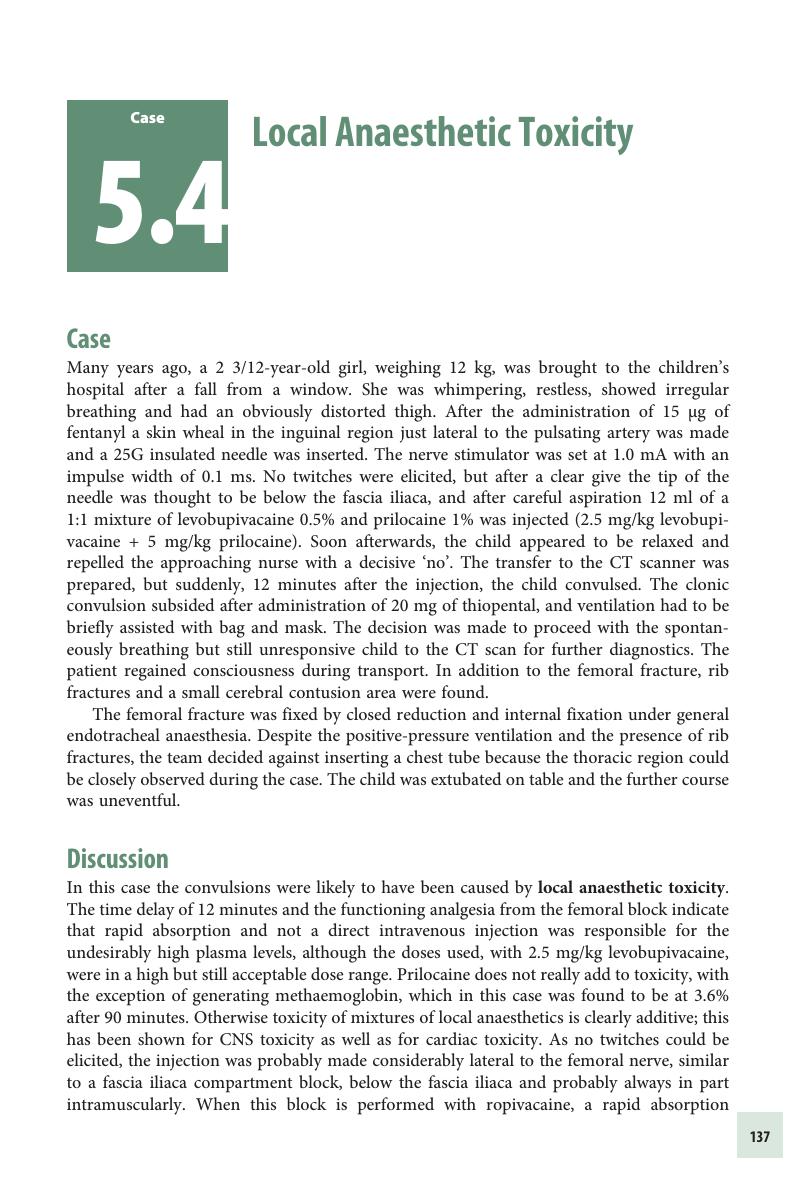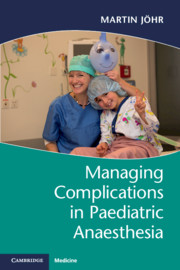Book contents
- Managing Complications in Paediatric Anaesthesia
- Managing Complications in Paediatric Anaesthesia
- Copyright page
- Dedication
- Contents
- Acknowledgements
- Abbreviations
- 1 Introduction
- 2 Concepts and Strategy
- 3 Airway-Related Problems
- 4 Vascular Access
- 5 Regional Anaesthesia
- Case 5.1 Wrong-Site Block
- Case 5.2 Inadequate Technique
- Case 5.3 Undesirable Block Extension
- Case 5.4 Local Anaesthetic Toxicity
- Case 5.5 Methaemoglobinaemia
- Case 5.6 Total Spinal Anaesthesia
- Case 5.7 Compartment Syndrome
- Case 5.8 Ischaemic Extremity
- Case 5.9 Needle Damage
- Case 5.10 Complications of Caudal Anaesthesia
- 6 Medication-Related Problems
- 7 Pre-existing Conditions
- 8 Miscellaneous
- Index
- References
Case 5.4 - Local Anaesthetic Toxicity
from 5 - Regional Anaesthesia
Published online by Cambridge University Press: 09 July 2018
- Managing Complications in Paediatric Anaesthesia
- Managing Complications in Paediatric Anaesthesia
- Copyright page
- Dedication
- Contents
- Acknowledgements
- Abbreviations
- 1 Introduction
- 2 Concepts and Strategy
- 3 Airway-Related Problems
- 4 Vascular Access
- 5 Regional Anaesthesia
- Case 5.1 Wrong-Site Block
- Case 5.2 Inadequate Technique
- Case 5.3 Undesirable Block Extension
- Case 5.4 Local Anaesthetic Toxicity
- Case 5.5 Methaemoglobinaemia
- Case 5.6 Total Spinal Anaesthesia
- Case 5.7 Compartment Syndrome
- Case 5.8 Ischaemic Extremity
- Case 5.9 Needle Damage
- Case 5.10 Complications of Caudal Anaesthesia
- 6 Medication-Related Problems
- 7 Pre-existing Conditions
- 8 Miscellaneous
- Index
- References
Summary

- Type
- Chapter
- Information
- Managing Complications in Paediatric Anaesthesia , pp. 137 - 139Publisher: Cambridge University PressPrint publication year: 2018



